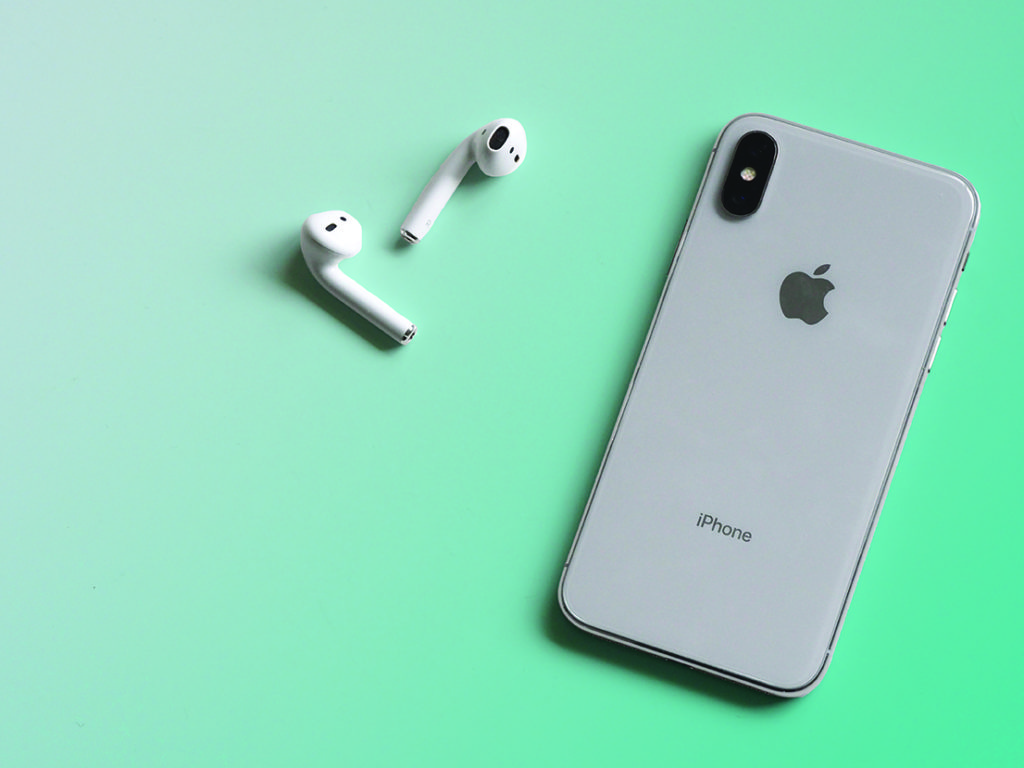You might remember Kim Possible, an animated TV show with its signature refrain, “Call me, beep me, if you wanna reach me.” When many of us were younger, we had no choice but to use a telephone; making a call was once the fastest option to reach someone at a local or long-distance location. Now, more than half of U.S. households have ditched their landline phones and only have wireless services. What’s more, communication trends show that many people prefer to be reached via texting instead of a phone call.1
Some might say that when email and chats became widespread, our worlds changed for the better. What has made phone calls so unfavorable? How is this trend impacting qualitative research?
 Strong Case for Texting
Strong Case for Texting
To uncover the reasons for this trend of texting vs. calls, let’s see what’s changed in the past 10 years:
- The rise of social media (texts and emails holding strong for interpersonal/business communication).
- More unwanted calls (e.g., robocalls, telemarketers, debt collectors, charitable or political pitches, scams, strangers/not in contacts list).
- More offices with open floor plans.
- Greater adoption of stereo headphones or AirPods with noise-cancelling mechanisms.
- A decrease in phone call quality.
- Acceptance and use of emojis and stickers.
- Growing adoption of smart watches and smart replies.
- Greater prevalence of instant messaging tools like Slack and Hangouts for group collaboration.
- An influx of video communications and video calls.
Our collective use of smart phones is remarkable. There’s always another post to like or share on social media apps/sites, including Facebook, Instagram, Twitter, TikTok, LinkedIn, and Pinterest. We’re also streaming content on YouTube, Netflix, and Disney+, playing games, listening to podcasts, Spotify, or Apple Music, booking flights and hotels, shopping from Amazon, Walmart, or Target, sending money virtually with social payment apps like Venmo or Zelle—the list goes on and on.
With so many apps, sites, and communications clamoring for our attention, it’s become more desirable to be able to decide when and to whom you give (or divide) your attention. Maybe social media has made us less social in some ways.
 Phone Calls Just Happen to You
Phone Calls Just Happen to You
A growing perception is that unscheduled phone calls are disruptive, and even intrusive.
First, if the call recipient is busy, it can be annoying to “drop everything” in order to accept a call. Due to the engagement required of a one-on-one phone call, multi-tasking is not recommended. Unless you’re using a headset or speaker phone, it’s very difficult to do anything else when you’re having an in-depth conversation on the phone.
Instead, it’s considered better form to schedule a call, or at least send a text message for quick permission to call, rather than just dialing immediately.
If a call recipient wants to make time for a call, they can accept—or else they can suggest a different time.
Like voice mail, preceding a call with text-based communications, such as emails or texting, provides recipients with time to process the request and respond with a mutually convenient time, whether that’s right now or not. In some cases, they are already in a phone call, where unexpected phone notifications are a distraction. (Or maybe they are using the bathroom.)
Like the way smart video doorbells allow you to know when a guest or package is arriving, this pre-call etiquette paves the way for smoother calling. It gives the recipient more control over when they reply and allows them to prioritize their time.
Needing Time to Think
By nature of a live or synchronous conversation, phone calls can feel rushed. There is limited time to think about a response as well as some pressure for questions to be answered immediately.
When key information is not ready, it results in the need for supplemental follow-ups. The same questions can be stated in an exchange of texts or emails.
Some say that it is a challenge to remember key details from a phone call. Apart from an occasional meeting agenda, without taking notes or receiving an email outlining “next steps,” there is nothing for reference when callers are ready to act.
Unlike text-based communications, you can’t “scroll back” through a phone conversation. In addition, it’s also more difficult to “prove” that you said something the way you can with text; we can’t search through what was said in old calls.
Pew Research Center found that sending notifications via text to consenting survey panel members improves response time (people take the survey sooner, on average) and boosts the share of respondents completing the survey on a mobile device. It does not, however, increase the ultimate response rate over a longer field period compared with sending notifications by email only.2
For time-sensitive communications in market research, we can encourage facilities and recruiting partners to consider sending text messages with the details of confirmations, links to locations and reminders for interviews, which participants can easily access on their phones—anytime, anywhere.
Keeping it Quiet
Many people are now keeping their smart phones on silent mode, opting for headphones and earbuds. According to Dr. Tom Rice, a lecturer in sonic anthropology at Exeter University, the wider trend is known as the “privatization of auditory space.”3 This relegates communications, including texts and phone calls, to text announcements on the phone’s lock screen or notifications center. (It’s rare to hear anyone’s sweet ringtones these days.)
This is especially true for people who are working in an open office plan with far fewer doors than desks, where noise is often the top complaint. Impromptu calls can be hectic in these environments, as people usually need a moment or two to book a conference room or at least move to a more private space to participate in the call. Receiving a call out of the blue can interrupt the work flow of the call recipient and others around them.
Similarly, it is considerate to send calendar notifications prior to a call; this notification usually shows up on smart phone lock screens and serves as a helpful reminder when the “event” rolls around.
Also, while headphones and earbuds are helpful to control and “enrich one’s auditory life,” Rice encourages people to “think about our sound environment more generally, and about which sounds we want more—and less—of in our lives.”
Regardless of the nature of the call, business or personal, calling someone without warning can imply that whatever you are going to say is more important than whatever the call recipient is doing.
Accordingly, I’d be remiss not to mention the plethora of “unknown” callers, scammers, and unfamiliar numbers that people don’t want to pick up. Some of these are robots and automated phone systems, which are easy to dismiss.
Hence, market research vendors and suppliers should continue to ask their clients and participants to add them to their lists of contacts. As we continue to develop online and offline relationships—for example, at the QRCA annual conference and other in-person events—think of meaningful ways to give your clients reasons to “friend” or follow you and your company on social media.
All the Small Things
In addition to all the points listed above, there are a few less significant reasons that text messages are favored over calls.
- Emojis, stickers, and animated GIFs are more popular than they were a decade ago; many people are using emojis as modern-day hieroglyphics. With them, messages seem customizable; combinations reflect the sender’s feelings—in some cases, replacing the need to use words. These emojis, stickers, or GIFs are used to show emotions, just for fun, or to illustrate a point. Alas, they cannot be used in phone calls.
- Some people also believe that phone calls are inefficient with overlapping replies (“Oh, you go ahead,” and “No, you go ahead”), waiting for colleagues, and what can be politely described as small talk (e.g., weekend/vacation plans, weather). When adding several people into the same call, it can eat up valuable meeting time.
- Poor call quality with unclear or garbled connections can sometimes stem from calling on a busy street or handling calls from a hotel lobby, airport, or parking garage. It can be frustrating to guess at what is being said. Like captions to an international film, text messages do the job well.
- Some might say, “Why not leave a voice mail?” Voice mail can feel like an endless loop. Someone calls, it goes to voice mail; you call them, it goes to voice mail. No one wants to feel tied to their desk. Instead, at the very least, it is more efficient to email or text asynchronously when attempting to schedule a call.
- One benefit of owning a smart watch is the “quick glance” notifications of incoming texts/calls on your wrist. This allows people to glance at their wrist and then decide if they need or want to follow up on a different device (e.g., smart phone, laptop/PC, tablet).
Thanks to advances in the conversational understanding capabilities of devices and machines, many smart watches also allow users to quickly respond to incoming texts or calls with a tap directly from the smart watch. These short text replies, also known as smart replies, are helpful for kicking off a longer text exchange or setting up a call at a more convenient time. All of this can be new territory for younger generations that did not grow up wearing a watch of any kind.
Texting in Market Research
These societal texting preferences have implications for market research. (Internationally, text messages have been the preferred method for contacting remote participants for years!)
From a recruiting perspective, market researchers and their recruiting partners should consider implementing alternative strategies (texting or emailing links to online surveys, social media recruits, etc.) to reach potential participants beyond phone calls alone.
After participants have opted in to be contacted for research, it can be effective to send texts with a link to access a mobile-friendly survey for screening and recruitment.
Many digital research platforms are offering solutions for integrated text-based communications, including emails with direct links to securely login and access new activities in online discussions. A few software providers have also integrated SMS/texting capabilities into their discussion platforms, which is worth exploring for opt-in research use, as participants may be inundated with emails.
Texting can also serve as an efficient way to collect more simple, open-ended research data at various touchpoints in long-term research communities or other longitudinal studies. Also, because emails can land in spam folders, texting can work well for participant engagement, ongoing communications, and notifications.
Next Steps
Would you rather take a voice message or a written one? How will you change your approach to making personal and business calls, if at all? Maybe you’ve already adopted some pre-call etiquette. Hopefully, this piece has shed some light on your own communications and preferences.
On a side note, keep in mind that video calls are an increasingly popular option! Consider utilizing chats and group calling features from robust apps like Skype for Business, Facebook Messenger, or WhatsApp, and you might be astonished at the clarity compared to your LTE wireless connection. (This could potentially be an option to conduct very scrappy market research for live interviews. Caution: Not for the faint of heart.)
If you are still getting phone calls, don’t hesitate to ask the caller to reach you at a better time. If it is a remarkably detailed conversation, consider asking the caller to follow up with an email for reference.
For those of you who are using calls to set up meetings and want to meet people in person to talk, nothing may change that; there is certainly value in connecting in person. However, considering this communications trend, you may want to convert more of those early touchpoints over to email, texts, or even social media messages.
Remember that you can upgrade a text to a call or video call if need be, but it’s harder to do the opposite. Texting a simple message like, “Hey, let’s chat when you have time,” or even asking for some good times to call and setting up a meeting invitation are actions that fit this new framework.
If a stand-alone phone call must be made, starting phone calls with “Is this a good time to talk?” or “Hey, did I catch you at a good time, or is there a better time that you’d like to talk?” is helpful, especially if you feel like you’re potentially interrupting the other person.
With that said, people still look forward to a good phone call or video call, especially from their friends. Just consider texting them first.
1 “Does Anyone Answer Phone Calls Anymore?” 18 October 2016
www.textrequest.com/blog/does-anyone-answer-phone-calls-anymore/
2 “Text Message Notification for Web Surveys” 7 September 2016
www.pewresearch.org/methods/2016/09/07/text-message-notification-for-web-surveys/
3 “Hit the Mute Button: Why Everyone Is Trying to Silence the Outside World,” 12 June 2019
www.theguardian.com/society/2019/jun/12/hit-mute-button-why-everyone-trying-to-silence-outside-world-uber


Be the first to comment